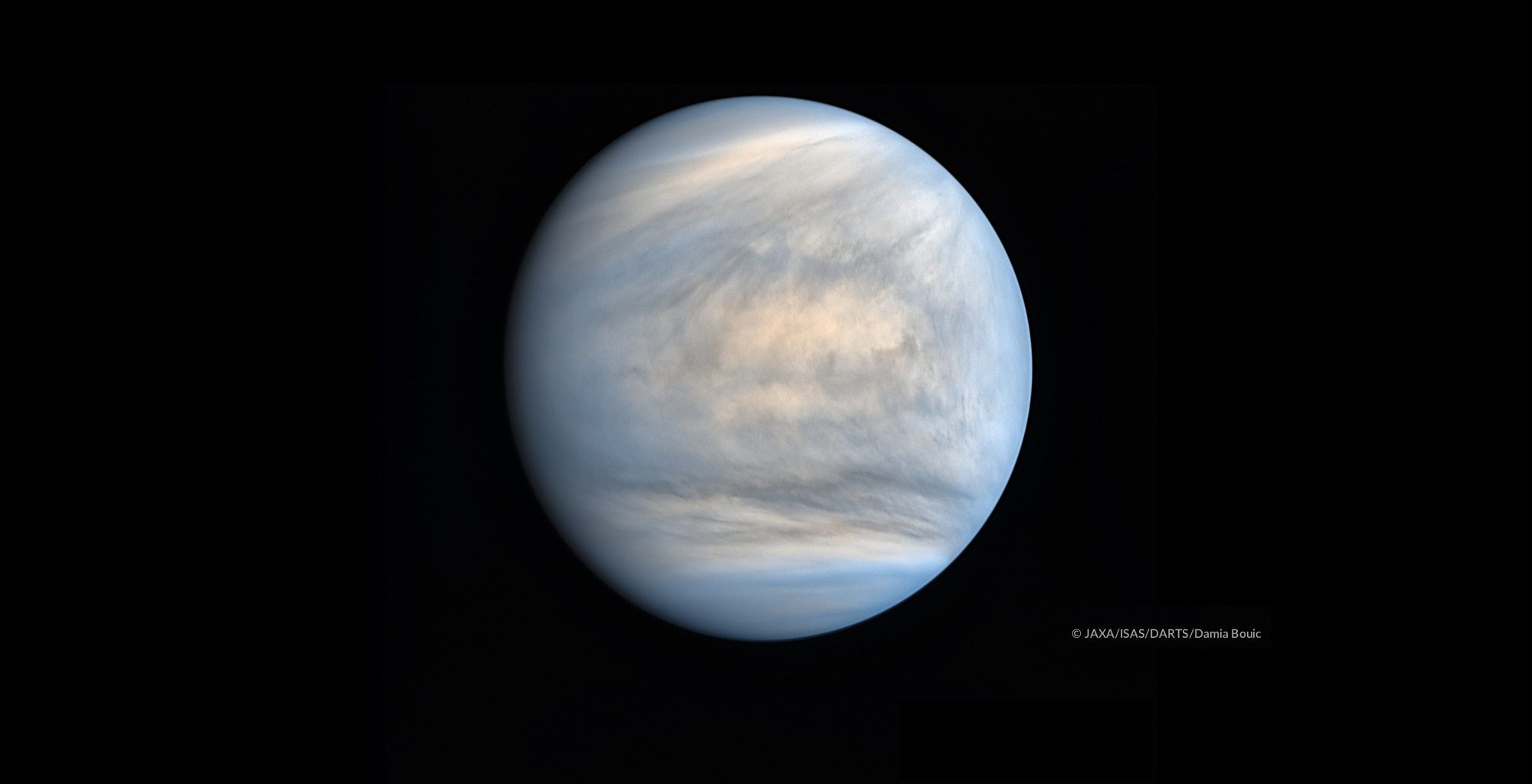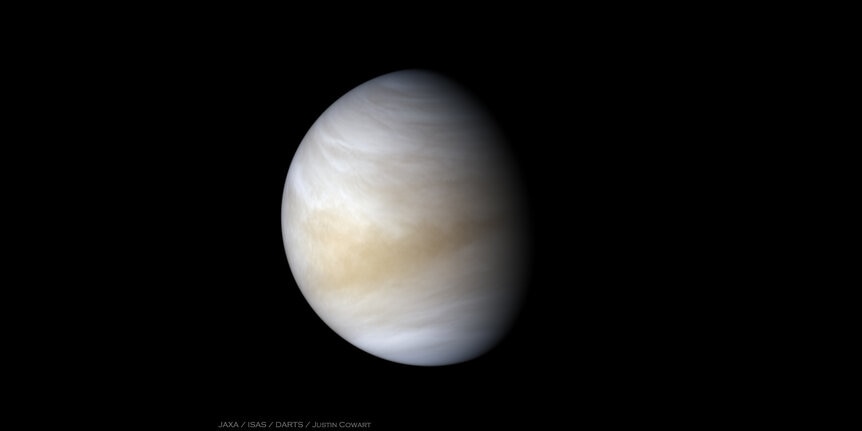Create a free profile to get unlimited access to exclusive videos, sweepstakes, and more!
Life in hell: Could Venus have a bacterial infection?

If Hell exists in the solar system, it's Venus.
The temperature at the surface is 460° C (860°F). The atmospheric pressure there is a crushing 90 times Earth's. The air is mostly carbon dioxide. Oh — the clouds completely covering the planet rain sulfuric acid, but don't worry, it's so hot the droplets vaporize before they can hit the ground.
I mean, come on.
So this might be the last planet in the solar system you'd look for life. And yet, some scientists are thinking about just that. And even more interesting, they might have a point.
The key to this is to get off the surface. Just as on Earth, as you go up in altitude the temperature drops. At some point in that thick atmosphere and eternal cloud cover, things get a lot more clement. Could there be life there?
Maaaaaaybe. There's been some speculation on this since the 1960s (including a paper co-authored by Carl Sagan). There have been a lot of advances since then, and scientists are taking the idea seriously, investigating observations taken from the Earth and on Venus, and finding clues that are pretty intriguing. Not conclusive, mind you, but certainly enough to make me wonder.
First, the location. Sure, you can melt zinc on the surface, but if you go up about 48 – 50 kilometers, the temperature is only about 60° C — still hot, but not boil-all-life hot. And the pressure eases to a more comfortable Earth-like amount.
This is at the bottom of the thick pan-planet cloud layer. Those clouds are made of tiny droplets of sulfuric acid about 100 microns across (a human hair is 100 microns in width, for comparison). There's also evidence of ferric chloride (FeCl3), too. More on that in sec.
But there's also something else there. In 1928 an astronomer noticed that when you look at the ultraviolet light coming from Venus, the clouds that look so smooth in optical and infrared light suddenly have features in them. Dark spots, some small and others hundred of kilometers across. And they change on timescales of minutes up to weeks. These have been confirmed and have been detected both by telescopes here on Earth and spacecraft sent to Venus.
So something is in the clouds there and blocking UV light, but not longer wavelengths. That's weird; with Earth's clouds, for example, you don't see such strong contrast changes with color. Scientists have long looked for some sort of chemical compound that can exist in those conditions that could explain these contrast features, but haven't found anything convincing yet.
Using the way light behaves as it passes through the Venusian* atmosphere, it looks like these contrasty bits are caused by something in the size range of 1 – 15 microns. That's roughly the same size scale as many bacteria here on Earth. And hey, many bacteria also absorb UV light while happily reflecting optical and infrared.
Hmmmm.
Now mind you, this is all circumstantial. The idea of teeny beasties creating these dark spots makes sense, but it could also be just some weird non-life chemistry we don't understand going on in the air there. That's possibly even more likely; we know there's all kinds of unusual reactions going on in various places in the solar system, but we've never found life anywhere but here.
Still, it's evocative. And the pieces do rather hold together.
One objection might be to ask where this life arose. Conditions there might be able to support life, but getting it started in the first place isn't as easy. However, it turns out that after it formed, Venus may have had water on its surface for about two billion years — longer than Mars did! Life was well established on Earth long before it was that age, so why not Venus?
Around that time, though, something on Venus went horribly wrong. Carbon dioxide released into the atmosphere began to heat the planet†, and somehow a runaway greenhouse effect got kickstarted, heating to the planet to hotter-than-an-oven-set-to-broil status. Any life on the surface would've been cooked.
But we know that bacteria on Earth exist in the atmosphere up to a pretty high altitude, held aloft by winds. Could that have happened on Venus? Actually, yes. Winds like that do exist there, and could keep microbes suspended in the thin habitable layer in the clouds. Incidentally, ferric chloride in the presence of sulfuric acid rapidly turns into iron sulfate (Fe2(SO4)3). There must be a source of more ferric chloride to maintain it in the atmosphere, and this may be windswept from the surface — more support that winds can transport material.
If the life is carbon-based like we are, the source of that could be the CO2 in the atmosphere. UV light provides energy, and there are even chemical reactions involving the sulfuric acid and ferric chloride and other materials that could provide sustenance.
If all this is true, the changing contrast in the clouds might be due to something akin to algae blooms. Isn't that a thought?
But again, none of this is proof. It's just compelling evidence, but compelling enough to keep looking. And personally, I support it. Thirty years ago or so this may have seemed like a flight of fancy, but as we've explored the solar system we've learned that it is filled to the brim with surprises. Undersurface oceans of water on many worlds. Atmospheres where we wouldn't expect them. Organic chemistry and geologic activity. Everywhere we look, no matter how hostile the conditions seem, we see the pieces for life to arise. Here on Earth those pieces fit together, and, well, here we are.
Why not Venus? Maybe sometime soon we'll know.
* There are a few terms that denote a relation to Venus, including the commonly used Venusian. An old-fashioned one I still like is Cytherean, but technically it should be Venerean, which, for some reason or another, isn't favored.
† Note: This was 2.5 billion years before Trump declared global warming to be a Chinese hoax.





























